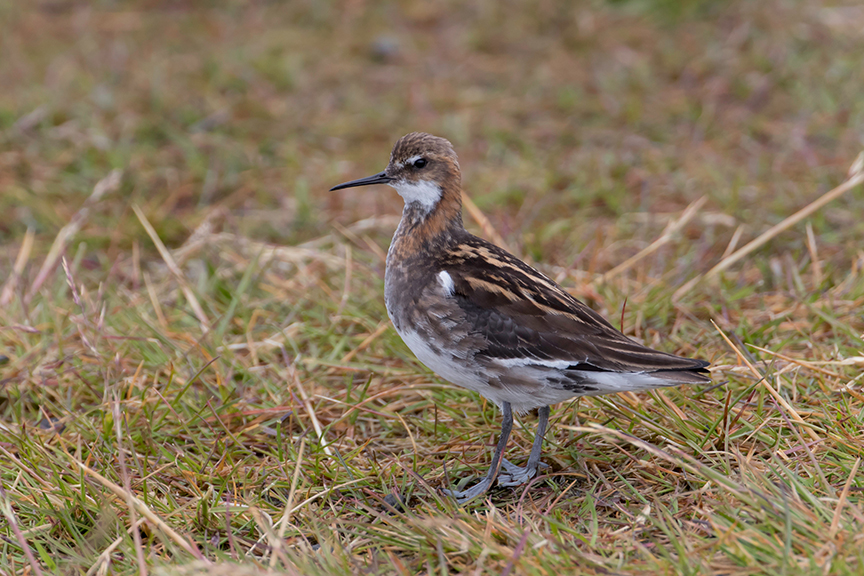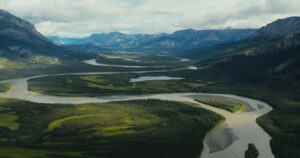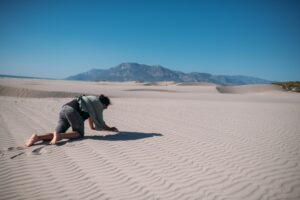Until the early years of the 20th century, the only way to reach the island of Grimsey, Iceland’s northernmost inhabited place, was by a mail boat that sailed twice a year from the mainland. At most twice a year. There’s a story about a Danish visitor who could not leave Grimsey, for one storm after another roared down from the Arctic and kept him on the island. At last, he gave up and married a local woman. It’s said that they lived happily ever after.
I first traveled to Grimsey myself in 1985 when it was still more or less unvisited by tourists. Thirty years later, I traveled again to the island and had the following experience.
So there I was, sitting by one of the island’s brackish ponds and watching a red-necked phalarope (Phalaropsis lobatus) stir up plankton for its supper with its needle-like bill. All of a sudden, I heard a barrage of voices. I looked up and saw a crowd of Vikings noisily ambling along a nearby road. Some of the men were wearing horned helmets, some had long grey beards glued to their chins, and some seemed to be dressed in armor. A few of the women were wearing long cloaks with brooches. A Viking in a wheelchair was waving a large sword.
Vikings had never set foot in Iceland
As it happened, these individuals were passengers on a National Geographic cruise ship. They were dressed as Vikings even though Vikings never set foot in Iceland. The island’s early settlers were Norse, not those swashbucklers who liked nothing better than to reduce a European city to rubble. Although these passengers didn’t seem inclined to reduce Grimsey to rubble, their shouts and guffaws did violate the evening’s quiet. Meadow pipits, snow buntings, and northern wheatears flew away. The phalarope quickly stopped churning up plankton, and it flew away, too.
I decided to follow the group even though I was not dressed as a marauding Viking. After 15 minutes, we arrived at our destination — a sign that indicated the Arctic Circle. The sign had arrows pointing in the direction of various cities (London, 1,972 km; Paris, 2,335km; Rome, 3,436km; New York, 4,448km; Sydney, 16,137km). Out came the Vikings’ cameras as well as their cellphones with selfie sticks.
There was a three-hole basaltic golf course next to the sign. Clubs and golf balls could be rented from a local guesthouse so that a visitor could tell his or her friends, “Hey, I whacked a golf ball across the Arctic Circle!” At least half of the putative Vikings now started playing this restricted form of golf. One man swung his club so hard that his helmet went flying through the air and landed in the lap of the fellow in the wheelchair.
Then came the retreat to the cruise ship. Some of the would-be Vikings were now holding their helmets in their hands, others were ripping off their fake beards, and still others had taken off their plastic armor. This raid wasn’t really serious, I told myself. After all, none of the houses on the island were burned down, nor did the invaders injure, much less slaughter a single local inhabitant of Grimsey. Even so, I wondered whether the red-necked phalarope I’d seen would ever return to the island.






